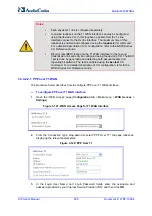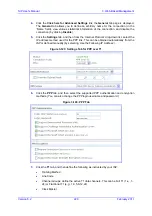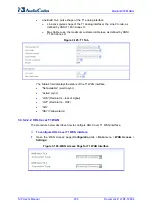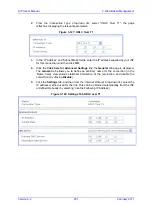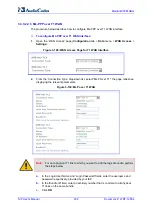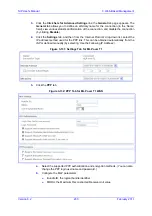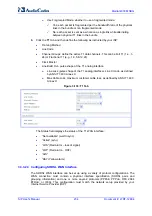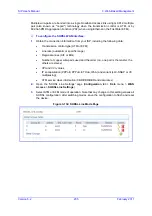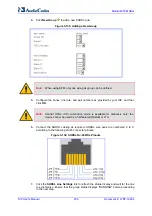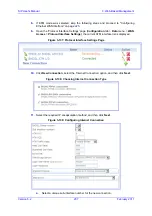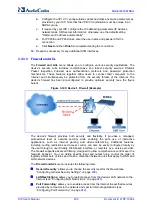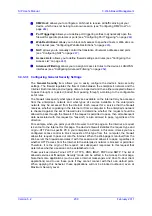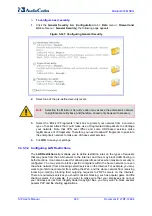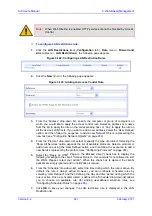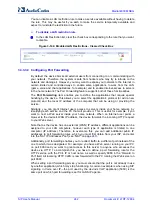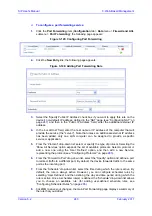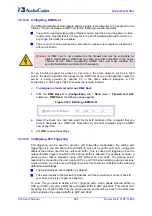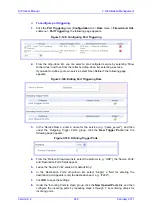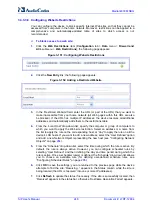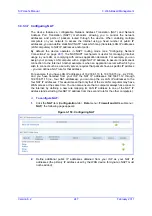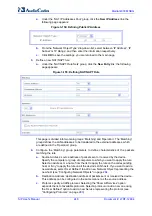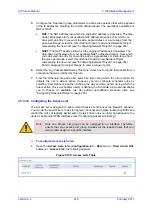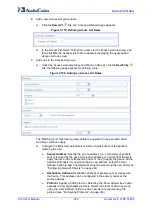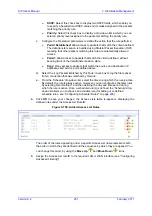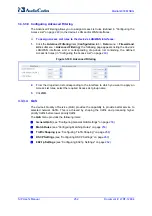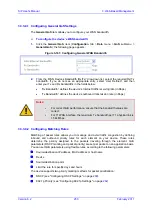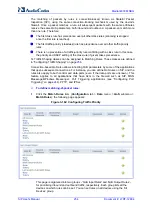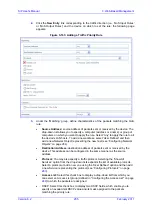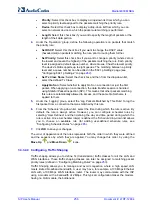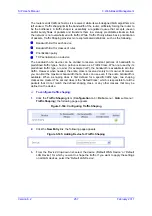
SIP User's Manual
242
Document #: LTRT-12804
Mediant 800 MSBG
You can disable a LAN restriction rule to make a service available without having to delete
the rule. This may be useful if you wish to make the service temporarily available and
expect to reinstate the restriction in the future.
¾
To disable a LAN restriction rule:
In the LAN Restriction list, clear the check box corresponding to the rule that you want
to disable.
Figure
3-144: Disabled LAN Restrictions - Cleared Check Box
3.3.3.3.3 Configuring Port Forwarding
By default, the device blocks all external users from connecting to or communicating with
your network. Therefore, the system is safe from hackers who may try to intrude on the
network and damage it. However, you may want to expose your network to the Internet in
certain limited and controlled ways to enable some applications to work from the LAN
(game, voice and chat applications, for example) and to enable Internet-access to servers
in the home network. The Port Forwarding feature supports both of these functionalities.
The
Port Forwarding
item enables you to define the applications that require special
handling by the device. This allows you to select the application's protocol (or add a new
protocol) and the local IP address of the computer that will be using or providing the
service.
Similarly, you can grant Internet users access to servers inside your home network, by
identifying each service and the PC that will provide it. This is useful, for example, if you
want to host a Web server inside your home network. When an Internet user points a
browser to the device's WAN IP address, the device forwards the incoming HTTP request
to your Web server.
Note that as the device has one external (WAN) IP address, different applications can be
assigned to your LAN computers, however each type of application is limited to one
computer (IP address). Therefore, to overcome this, you can add additional public IP
addresses to port forwarding rules, which you must first obtain from your ISP, and enter
into the 'NAT IP Addresses Pool' (see ''NAT'' on page
).
Additionally, port forwarding enables you to redirect traffic to a different port instead of the
one to which it was designated. For example, you have a Web server running on your PC
on port 8080 and you want to grant access to this server to anyone who accesses the
device via HTTP. To accomplish this, you have to define a port forwarding rule for the
HTTP service, with the PC's IP or host name, as well as specify 8080 in the 'Forward to
Port' field. All incoming HTTP traffic is now forwarded to the PC running the Web server on
port 8080.
When setting a port forwarding service, you must ensure that the port is not already in use
by another application, which may stop functioning. A common example is when using SIP
signaling in Voice over IP—the port used by the device's VoIP application (5060) is the
same port on which port forwarding is set for LAN SIP agents.
Summary of Contents for Mediant 800 MSBG
Page 2: ......
Page 366: ...SIP User s Manual 366 Document LTRT 12804 Mediant 800 MSBG Reader s Notes ...
Page 372: ...SIP User s Manual 372 Document LTRT 12804 Mediant 800 MSBG Reader s Notes ...
Page 390: ...SIP User s Manual 390 Document LTRT 12804 Mediant 800 MSBG Reader s Notes ...
Page 404: ...SIP User s Manual 404 Document LTRT 12804 Mediant 800 MSBG Reader s Notes ...
Page 616: ...SIP User s Manual 616 Document LTRT 12804 Mediant 800 MSBG Reader s Notes ...
Page 636: ...SIP User s Manual 636 Document LTRT 12804 Mediant 800 MSBG Reader s Notes ...
Page 652: ...SIP User s Manual 652 Document LTRT 12804 Mediant 800 MSBG Reader s Notes ...
Page 886: ...SIP User s Manual 886 Document LTRT 12804 Mediant 800 MSBG Reader s Notes ...

